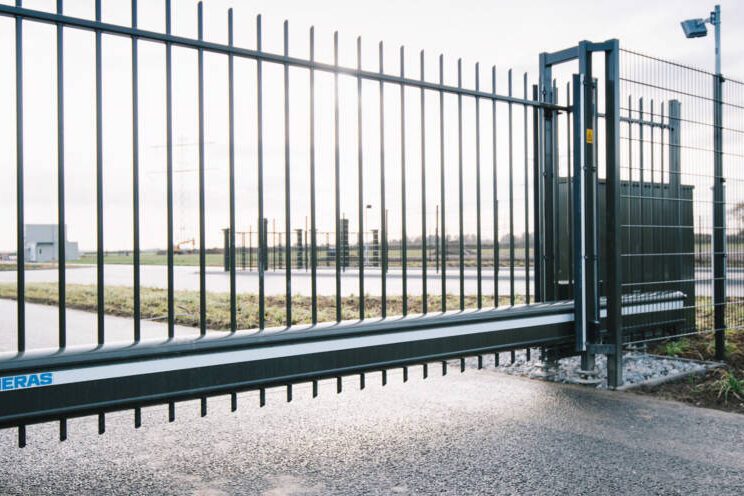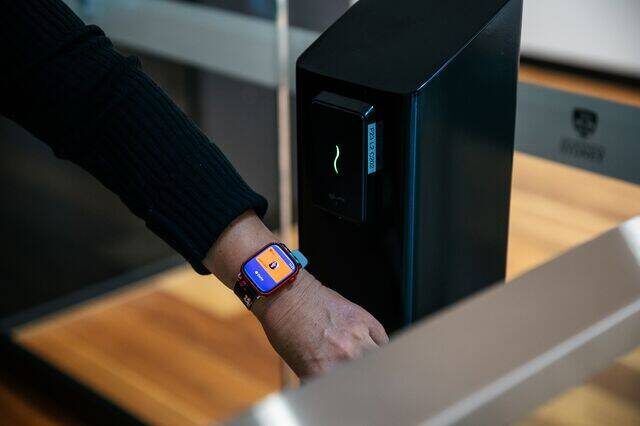Getting personal: on the beat with body worn cameras
Tim Compston of SecurityNewsDesk discovers that body worn video cameras are increasingly in the frame to help protect police officers, workers and the wider community. As Body Worn Video (BWV) camera solutions expand their reach amongst police forces, and filter down to private security guards and customer-facing employees, we look at the state of play of this technology and the impact it is having for users.
From a police perspective, body worn video is certainly coming to the fore across the Atlantic in a US drive for greater ‘transparency’ following a series of cases of fatal incidents involving police officers and subsequent nation-wide protests. In the wake of this, back in May, the Department of Justice announced a $20 million pilot programme to expand the deployment of body worn cameras. Speaking at the time the Attorney General explained the thinking behind the scheme:
“Body worn cameras hold tremendous promise for enhancing transparency, promoting accountability, and advancing public safety for law enforcement issues and the communities they serve.”
Significantly, the utility of body worn video is backed-up by a number of studies. A frequently cited study, published by researchers from the University of Cambridge’s Institute of Criminology (IoC) – who analysed policing with body worn video cameras in Rialto California in 2012 – showed that during the 12-month experiment, compared to the previous year, use-of-force by officers wearing cameras fell by 59 percent and reports against officers dropped 87 percent. The Cambridge University researchers do, however, caution that more work needs to be done around the subject of body worn video before there is wholesale adoption by the police, in particular around questions like the impact that this evidence will have on the expectations of prosecutors, the policies that need to be implemented to cope with the volume of data and associated storage technologies.
On the move for policing
On this side of the Atlantic, body worn deployment has certainly moved into the fast lane with the Mayor of London’s announcement of a massive twenty-fold uplift in the number of units deployed. Boris Johnson confirmed that by March next year (2010) a further 20,000 devices, above and beyond existing cameras, will be available for use.
One of the strongest advocates of ‘body cams’ as far as the UK is concerned is Matthew Ellis, the Police and Crime Commissioner for Staffordshire, who was instrumental in ensuring that all front-line police officers, PCSOs and Special Constables, across Staffordshire and Stoke-on-Trent received body cams. Speaking to Ellis about why he went for body worn video cameras in such a big way, he says that this approach ties-in with his commitment to more open policing:
“Looking at quite a lot of the complaints which come in about police officers when individuals are being arrested, or more generally, I thought wouldn’t it be great to cut-out the awful amount of time that is wasted on spurious complaints from individuals who just don’t like being arrested and have been arrested in a perfectly sensible way. We are now able to look at the pictures of what actually happened rather than just relying on the words of individuals who disagree over the particular circumstances.”

A second driver for the cameras, explains Ellis, was the way that officers talked to him about how things like Tasers can prevent situations getting out of hand because individuals see officers carrying them:
“I wondered if the same thing would happen with body worn video cameras. Well, the reality is that, when they were trialled, early on officers were saying that in a number of incidents once they pressed the body cam’s button, and the light came on, people become much more sensible and compliant.”
Another force which is opting for body worn video in a big way is Hampshire whose Chief Constable, Andy Marsh confirmed, earlier this year, that it is to roll-out Reveal body cameras for 2,800 frontline staff. According to Ben Read, Marketing Executive at Reveal, this is very much a sign of the times. Whereas a few years ago many UK police forces may not have even heard of body worn video today, says Read, not only have they heard of it, they are seriously considering deployment: “The question now really is what provider to go for?” The answer to that question isn’t that easy given the plethora of existing and new entrants coming into the market.
The right response
Speaking to Margaret O’Hare from Pinnacle Response, she agrees that things are really up in the air at the moment in terms of what is the best body worn approach to take:
“The industry is just trying to decide what it wants because although it isn’t new as a technology, it is new in terms of such mass adoption and there isn’t really a standard as such. The UK is certainly moving towards full personal issue for frontline [police] officers.”
On the point of whether it is best to just record when a button is actually pressed, O’Hare points to the Surveillance Camera Commissioner and the Surveillance Camera Code of Practice which has some sections on ‘body worn’ video: “The use of the camera for recording is supposed to be proportionate, relevant to the need, and the person you are recording is supposed to be made aware that recording has happened. They caution against continuous use because there are privacy issues there,” concludes O’Hare.
Discussing specific solutions, O’Hare says that Pinnacle Response is in the throes of launching a new model, the PR6, which is due out officially at the end of summer. Although wanting to keep some of the features of the PR6 under wraps for now, O’Hare confirms that the camera will come with Wi-Fi upload and that this functionality ties-in with an industry focus around back office solutions.
Market analysis
Taking a wider perspective on the market for body worn video cameras, Oliver Philippou, Senior Analyst, IHS confirms that he is in the midst of research on this very topic as part of a larger ‘Mobile Video Surveillance’ report, scheduled for publication this October: “It will cover the full spectrum of mobile surveillance.” Philippou says that the decision to include body worn video cameras was influenced by the relentless growth, and publicity, associated with the technology and the apparent need demonstrated by police forces not just in the UK but worldwide.
Joined-up surveillance
Of course a practical issue – and potential logistical nightmare – that springs up around body worn video is how to import and archive video content with a multitude of camera makes and models hitting the streets. With this in mind Genetec is expanding the support it offers for such devices through the latest release of the popular Security Center (5.3 SR1), the unified security platform, with the body wearable cameras now covered including from: B-CAM, GoPro, Vievue and Zepcam.
Erick Ceresato, product Marketing Manager at Genetec, puts the new version of Security Center into context: “There are a lot of body wearable camera manufacturers out there and each have independent software systems that don’t play with the rest of the IP surveillance infrastructure.” A consequence of this, says Ceresato, is that Genetec is receiving ever more requests from customers, mostly law enforcement, but also different security departments, airports, and organisations dealing with the public, who want Security Center support for their body wearable cameras.
A head for cameras
For his part, Adam Liardet, Managing Director at Audax Global Solutions Ltd, has an interesting take on the head of steam which the whole body worn phenomena has gained, having been involved in the technology from day one: “We started back before all these other companies appeared. At that stage it was head cameras and we worked with Devon and Cornwall Constabulary and the Home Office.”
According to Liardet this was the first ‘real’ trial to provide evidence that cameras discouraged assaults on police officers and the study flagged-up other advantage:
“It [the head camera] saved an awful lot of paperwork and sped up conviction rates.”
Asked why the market trajectory today seems to be away from head-mounted and towards chest-worn devices, Liardet laments that one reason, initially, was the cabling: “Certain health and safety elements were concerned that the cabling could be used to throttle a police officer. In ten years of doing this we have never known of that happening and, indeed, they have break points built in.”
Another issue, says Liardet was that wearing a headband was deemed uncomfortable for long periods of time. Although chest worn cameras are now predominantly issued to beat type officers or PCSOs in the UK, Liardet points out that the most recent Home Office studies, and trials indicate, that outside of this they are just not suitable for more specialised applications like firearms officers: “Basically with a camera mounted on your head if you hear a noise you tend to turn your head and don’t necessarily turn your whole body.”
Keeping it simple
Interestingly, Wireless CCTV (CCTV) rather than ramping up the ability of body worn video cameras to operate over wireless technologies – which the company is so well  known for – with its latest WCCTV HD body worn unit where simplicity is the order of the day: “We are kind of going back to basics again and we have just launched this new high definition version which is just standalone, it is more just your traditional body worn as the industry would understand it.” Del Soldato says that the camera, which offers local recording, is targeted at the police and vulnerable workers.
known for – with its latest WCCTV HD body worn unit where simplicity is the order of the day: “We are kind of going back to basics again and we have just launched this new high definition version which is just standalone, it is more just your traditional body worn as the industry would understand it.” Del Soldato says that the camera, which offers local recording, is targeted at the police and vulnerable workers.
When I caught up with Stuart Boutell Product Manager and co-founder of Edinburgh-based Edesix at IFSEC, he was keen to tell me about the company’s ‘third generation’ Video Badge product the VB-300 Series which adds a WiFi streaming capability for the first time to the company’s body worn video offering: “The important thing to know about the streaming camera is that at the same time as you stream back to your control centre in your shopping centre or, over WiFi to 4G, to your remote monitoring centre you are also making an evidential, by quality, copy for later use.” Boutell feels that it is important to have recording on the device alongside any streaming version as some networks may be unreliable or have a low capacity: “The streaming is always of a lower quality than is recorded on the device,” says Boutell.
On the Frontline
A vendor starting to dip its toes into the body worn video camera market is IndigoVision which previewed its FrontLine models at Intersec in Dubai earlier in the year and more recently at IFSEC. Although it is early days, already the company has seen a surge in interest and in fact IndigoVision’s FrontLine cameras are already being put under the spotlight as part of a six-month trial by Dubai Police which was officially announced back in May.
Speaking to Marcus Kneen, IndigoVision’s ceo, he reckons that we are really only seeing the tip of the iceberg and that there is plenty of scope for body worn video cameras and not just for the police:
“A lot of people are looking at this quite narrowly as just a product for the police but it is much wider than this. Our body worn camera is marketed under the ‘FrontLine’ name and it is really for anyone who is in frontline services where they can be subject to aggressive behaviour from the people they are dealing with,” says Kneen.
A wider vision
Duncan Ross of Vision On Systems Ltd who was demonstrating a body worn camera solution at IFSEC called the amovi body cam, which – according to Ross – impressed visitors with its smooth streaming capabilities, came to the conclusion early on that the police market is best avoided: “It is a very fickle market and you are going to end up competing with all of the big players, so it will be something that isn’t very expensive, and not very good, or very expensive and we didn’t want to get into that space and so started looking at non-security applications,” says Ross. So where does Ross think the potential for bodyworn video is relatively untapped? Well, he says that the amovi is ideally suited for non-security applications like lone worker or in engineering environments where, if someone comes across a problem, they can communicate that back to a control room.
To come-up with a solution, Ross worked closely with Canadian company VeriEye Technologies which cut its teeth with digital recording cameras for taxis. John Ballantyne, CTO, at VeriEye Technologies takes up the story:
“We have developed the first generation of the product to be as flexible as possible. What we are trying to do is to explore as many applications for what we call ‘over-the-air’ video. There are three different modes, one is ‘live’ streaming so that you can actually see what is happening now, one is ‘clip’ to ‘cloud’ where there is some kind of event that creates a finite length video clip which gets sent to the cloud – perhaps minutes after the fact – and then the third is where you can browse the memory of the camera and select a clip to be uploaded later.”
Greater deployment
So to round-up, the deployment of body worn video cameras by the police has reached unprecedented numbers as forces look to take advantage of the operational gains and ‘transparency’ that the technology brings. Outside of this vendors are racing to identify new opportunities and it will be instructive to see if the police’s enthusiasm for the technology is replicated elsewhere.
[su_button url=”https://www.securitynewsdesk.com/newspaper/” target=”blank” style=”flat” background=”#df2027″ color=”#ffffff” size=”10″ radius=”0″ icon=”icon: arrow-circle-right”]To read the SecurityNewsDesk newspaper click here[/su_button]









